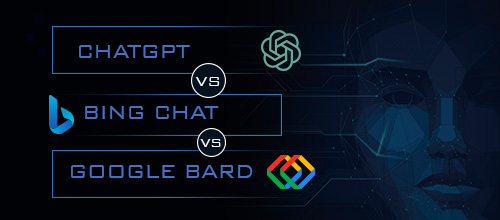ChatGPT Vs. Bing Chat Vs. Google Bard: Do They Differ From Each Other?
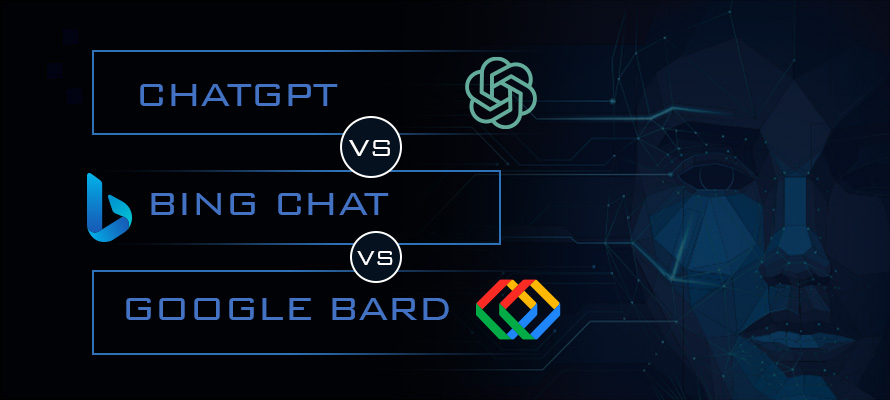
Written by Syed Usman Chishti
Subject Matter Expert
June 16, 2023
Generative AI models are gaining a lot of traction as the world is impressed by their unique and accurate outputs. These models are designed to respond to human queries and provide an output like a conversation.
Millions of daily users use text prompts to write emails, generate ideas, or collect data for further processing. Currently, there are three popular conversational AIs: ChatGPT, Bing chat, and Google Bard. They provide thorough responses and have the capacity to create great content. Each AI model brings unique features and capabilities, catering to different user needs and applications.
In this blog, we will compare these three generative AI models to understand their features, strengths, limitations, and response to prompts. Let’s start with a brief side-by-side comparison:
Interactive Abilities |
It engages with natural language responses on various topics after understanding the context. |
Technology |
GPT 4 |
Developer |
OpenAI |
Pricing |
Free for users, but an upgraded version is available for $20 per month. |
Information Access |
Training data is available till September 2021. |
Language Support |
Understands and generates output in different languages. |
Commercial Use |
Available. |
Speed |
API takes an average of 50 seconds to respond. |
Interactive Abilities |
It gives feedback but needs help to make complex or complicated ones. |
Technology |
GPT 4 |
Developer |
OpenAI |
Pricing |
Free for users. |
Information Access |
Real-time access, gets data from Bing. |
Language Support |
Gives feedback in English while supporting a limited number of languages. |
Commercial Use |
Not Available. |
Speed |
Not Available |
Interactive Abilities |
It generates human responses but struggles with complex questions. |
Technology |
LaMDA |
Developer |
Alphabet/Google |
Pricing |
Free for users. |
Information Access |
Real-time access, gets data from Google. |
Language Support |
Gives feedback in English while supporting a limited number of languages. |
Commercial Use |
Not Available. |
Speed |
Not Available |
Now, let’s evaluate each generative AI model individually.
ChatGPT
ChatGPT is an advanced language model developed by OpenAI. It is based on the GPT-3.5 architecture and has been trained on vast text data to generate human-like responses. ChatGPT is designed to provide conversational assistance, answer questions, and interact with users. Use this link to try out ChatGPT.
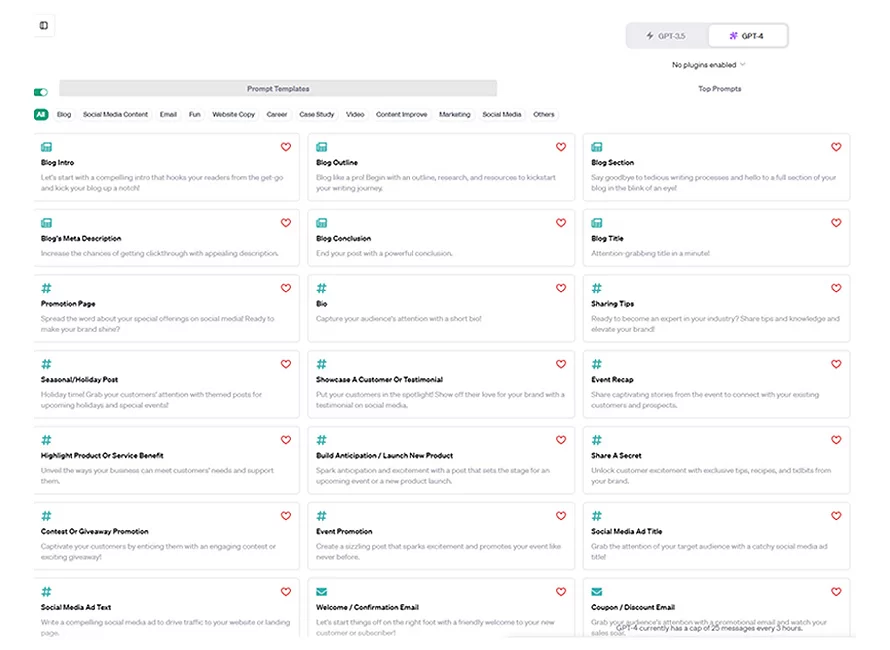
Features and Capabilities
- Natural language processing:
ChatGPT utilizes advanced natural language processing techniques to understand user queries and generate contextually relevant responses. It can interpret and respond to various conversational prompts, making it adaptable to various dialogue scenarios. - Contextual understanding:
ChatGPT excels at maintaining context throughout a conversation. It can retain information from previous interactions, allowing for coherent and contextually appropriate responses. This capability enables more engaging and meaningful conversations with users. - Conversational abilities:
ChatGPT is designed to engage in an interactive dialogue with users. It can answer questions, provide information, offer suggestions, and assist with tasks. It aims to provide human-like conversational experiences, although it may occasionally produce incorrect or nonsensical responses.
Strengths over Bing Chat and Google Bard
- ChatGPT’s strength lies in its ability to generate human-like responses, making conversations with it feel more natural and engaging.
- It can provide informative and contextually relevant answers to various questions.
- ChatGPT’s contextual understanding maintains coherence and carries meaningful conversations over multiple turns.
Limitations of ChatGPT
- ChatGPT may occasionally produce incorrect responses, as it relies on statistical patterns learned from training data.
- It can be sensitive to input phrasing, leading to different responses based on slightly rephrasing the same query.
- ChatGPT might generate plausible-sounding but factually inaccurate information.
Bing Chat
Bing Chat is a search engine-based conversational AI developed by Microsoft and built directly into Microsoft Edge’s sidebar. It aims to provide users with answers to their complex questions, summarize information, and help them compare different products or services side by side. You can use this link to give Bing Chat a try.
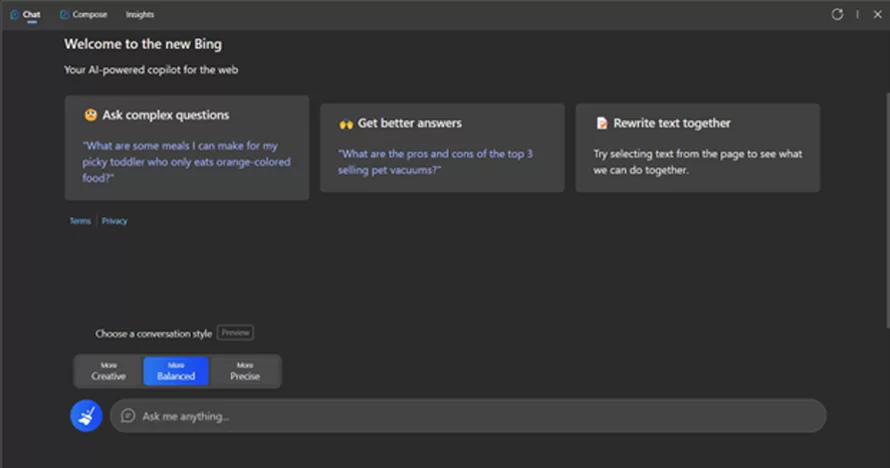
Features and Capabilities
- Get instant summarizations and answers:
Bing Chat uses its native search engine to summarize, and answer queries the user asks. In addition, the page context feature makes it easier to understand what the page is about instead of reading it entirely. - Compare your options:
Bing Chat can compare products directly in the browser’s sidebar. In addition, users can save hours of manual searching by asking Bing Chat to create a table that provides consolidated information necessary for comparison. - Instantly generate text on any topic:
Bing Chat allows users to request assistance for various writing tasks such as composing emails, jotting down ideas, creating blog posts, drafting letters, crafting paragraphs, and more.
Strengths over ChatGPT and Google Bard
- Bing Chat can recognize user intents effectively to provide more targeted and relevant assistance.
- It leverages user history and preferences to personalize responses and tailor recommendations.
- Bing Chat gathers continuous feedback and data to enhance its responses while expanding its knowledge base extensively.
Limitations of Bing Chat
- It may encounter difficulties handling more nuanced or specific topics requiring extensive domain knowledge.
- Users may find it challenging to have in-depth discussions or receive detailed explanations on complex subjects
- Users may experience delays or the inability to access certain features
Google Bard
Bard is an AI model developed by Google that is powered by LaMDA and PaLM2. It understands nuance and draws information from Google Search Results to form a conversational answer. At the moment, Bard is a standalone AI application and will later become a function of Google Search. Google also combined its DeepMind Unit with its Primary AI Lab in April to boost AI research. Here’s a link to try out Google BARD for free.
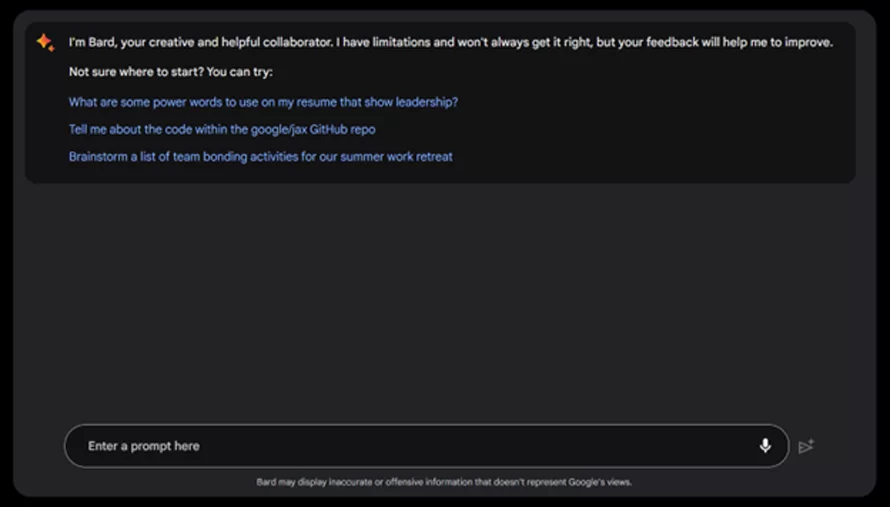
Features and Capabilities
- Answering Questions:
Bard follows instructions thoughtfully to complete them by accessing and processing information from Google Search. It is continuously learning to generate more creative and engaging responses. - Translating languages:
Bard can translate written and spoken languages. For example, you could ask Bard to translate a page of text from English to Spanish or a conversation between two people speaking different languages. - Writing different kinds of creative content:
Bard can write poems, code, scripts, musical pieces, emails, letters, etc. So, for example, you could ask Bard to write you a poem about love or to generate a script for a short film.
Strengths over ChatGPT and Bing Chat
- Automatically generate 3 outputs, allowing users to select the most suitable output.
- Helping with research by providing you with citations and other relevant information.
- Helping with creative tasks like writing poems, scripts, and musical pieces.
Limitations of Google Bard
- Bard’s focus on creative writing limits its ability to provide accurate or informative responses.
- As with any AI-generated content, the quality and coherence of Bard’s output can vary, and it may occasionally produce nonsensical or inconsistent content.
- Bard’s understanding of context and user intent might be limited compared to ChatGPT or Bing Chat
How Well Do They Respond to Prompts
To see how they respond, let’s give all three of them the following prompt:
“How are Large Language models reshaping the retail industry? Summarize in 100 words”
ChatGPT
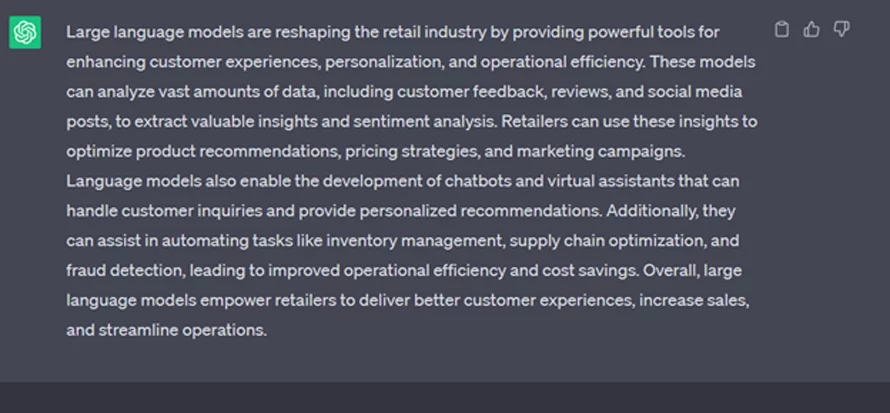
Bing Chat

Google Bard
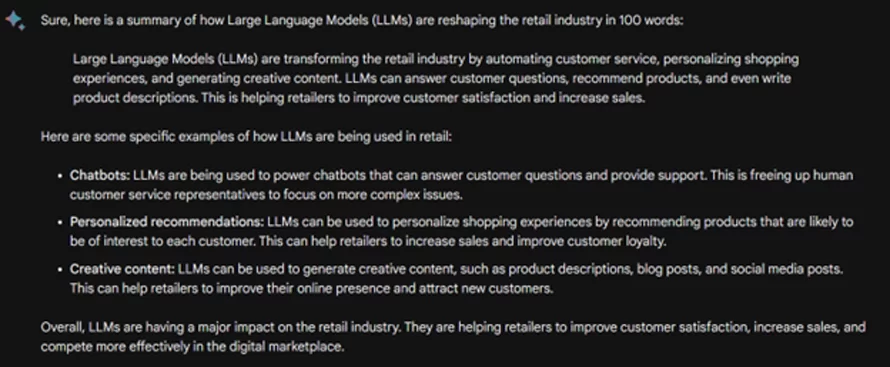
As you can see, all three generated a different output to the same prompt. This means, each generative AI model has a different thought process on how it understands the prompt, processes the data, and presents the information to the reader.
Conclusion
ChatGPT, Bing Chat, and Google Bard are three popular generative AI models with unique features and capabilities. While these models have strengths, they also have limitations, such as occasional inaccuracies or difficulties with complex topics. Understanding their differences allows users to choose the most suitable AI model. Since all three generative AI models give different outputs to the same or similar prompts, you should try out all three to see which one better addresses your queries.
Royal Cyber is a leading consultant for generative AI and can help you build a custom conversational AI solution. Feel free to get in touch with us for further discussion.
Recent Blogs
- Middleware is often considered the glue that binds different systems and connecting platforms, and it …Read More »
- Learn to write effective test cases. Master best practices, templates, and tips to enhance software …Read More »
- In today’s fast-paced digital landscape, seamless data integration is crucial for businessRead More »
